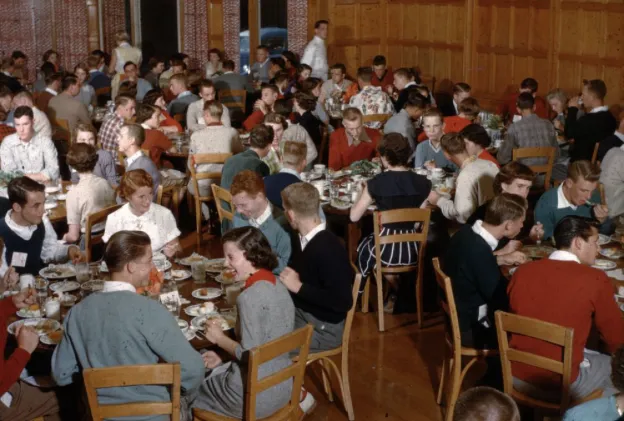Table of Contents
(The following editorial is in response to a Daily critique of a recent Review article about Stanford Dining.)
Careful research, not some childish need to complain, indicates Stanford Dining’s expense and uninspired food originated with the school’s 1925 decision to require students to purchase meal plans, at a time of financial trouble for the University and racial prejudice against local non-white restaurant owners. I put forward a few non-partisan ideas with the goal of increasing competition and students’ choices. Throw out the meal plan. Lease dining hall space to third party vendors. Streamline the provision of new leases at reasonable rates. Directly subsidize students on financial aid with cash allowances. Allow food trucks.
Terence Zhao, a Daily columnist, spends some of his first sentences in a critique of this proposal by inadvertently making my point about the dire need for dining competition at Stanford:
The rice is almost never cooked right; the texture of the Arrillaga chicken remains absolutely inexplicable; I still hate the sadist who came up with the half-mushroom, half-beef burgers but not as much as I hate the other sadist who somehow managed to come up with beet hummus and made me accept it as a normal thing.
If the dining halls cannot cook rice and chicken correctly, they must be in bad shape. After this great condemnation of the dining halls, he errs, basically telling students who desire choice in their food options to accept mediocrity and relative superiority to other schools’ food services. He chiefly misses that students are angry not because of food quality but because of price relative to quality. He also fails to understand that lower prices paired with better food would make Stanford’s food environment more equitable since students of all backgrounds, not just those in Greek life or those who are rich enough to frequent Mayfield Bakery, would have access to good meals. But, to really enjoy Zhao’s prose we have to take his critiques one at a time:
RD&E declares that dining halls “play a key role in this mission of community building” — which is true, in the most ironic sense imaginable, because they do so partly by allowing students from every walk of campus life to bond over their complaints about the Arrillaga chicken.
Maybe Stanford should bench Bryce Love, make K. J. Costello throw left-handed, and have the offensive line wear blindfolds so we can “bond” over complaints about losing to every team in the Pac-12. I wonder if starving North Koreans feel like Communism has helped them “bond” with a diet consisting of dirt. Mandating meal plans to build communities in dorms is futile because students can eat in any campus dining hall, and those halls are typically highly segregated by cliques. Now, back to Zhao’s column:
All I know is that as far as a long-term dining arrangement goes, I really can’t conceptualize a significantly better one. Maybe I feel that way because of the horror stories I’ve heard from other places (i.e. live insects in the salads).
Unnamed other places have bugs in their food! Arguing over vague, baseless pretences is a waste of time, but take this idea at face value. CoHo, Coupa, Tresidder Union restaurants, and delivery options like Postmates provide better food and cost less than dining halls but have no issues with cleanliness. If students had the liberty to choose their food options, surely they would select these eateries over allegedly insect-infested, third-party-operated dining halls. The whole point of competition in place of the the meal plan mandate is restaurants which do not serve acceptable food will lose customers to their competitors. One final point from the critique:
To complain about what is often considered one of the best college dining programs in the country while 1 in 8 American households are hungry and 1 in 6 Americans do not have access to fresh produce really is the peak of privilege.
Access to affordable healthcare is also a huge problem in America. Should Stanford raise prices at Vaden Health Center and provide mediocre care because 1 in 9 Americans do not have health insurance? No doubt the plight of the less fortunate is very real, and Stanford students often utilize their education to help those in need, but surely students can expect good food options and also be concerned about the poor — they are not mutually exclusive. I worry about cronyism, environmental disasters, inflation, the California housing crisis, and American healthcare. “Privilege” should not stop students from addressing these important issues (a full stomach would help!). “Privilege” in this context is wholly irrelevant.
Stanford’s mandated meal plan prohibits the forces of competition from spurring innovation and lowering costs in students’ and faculties’ food options. Popular opinion among Stanford students has never been that dining hall food is entirely inedible. The gripe is the food is mediocre and more expensive than at neighboring schools, like Santa Clara University. Students instinctually despise the mandate. Competition and agency in choosing meals would afford students, from all backgrounds, better food at fair prices.









